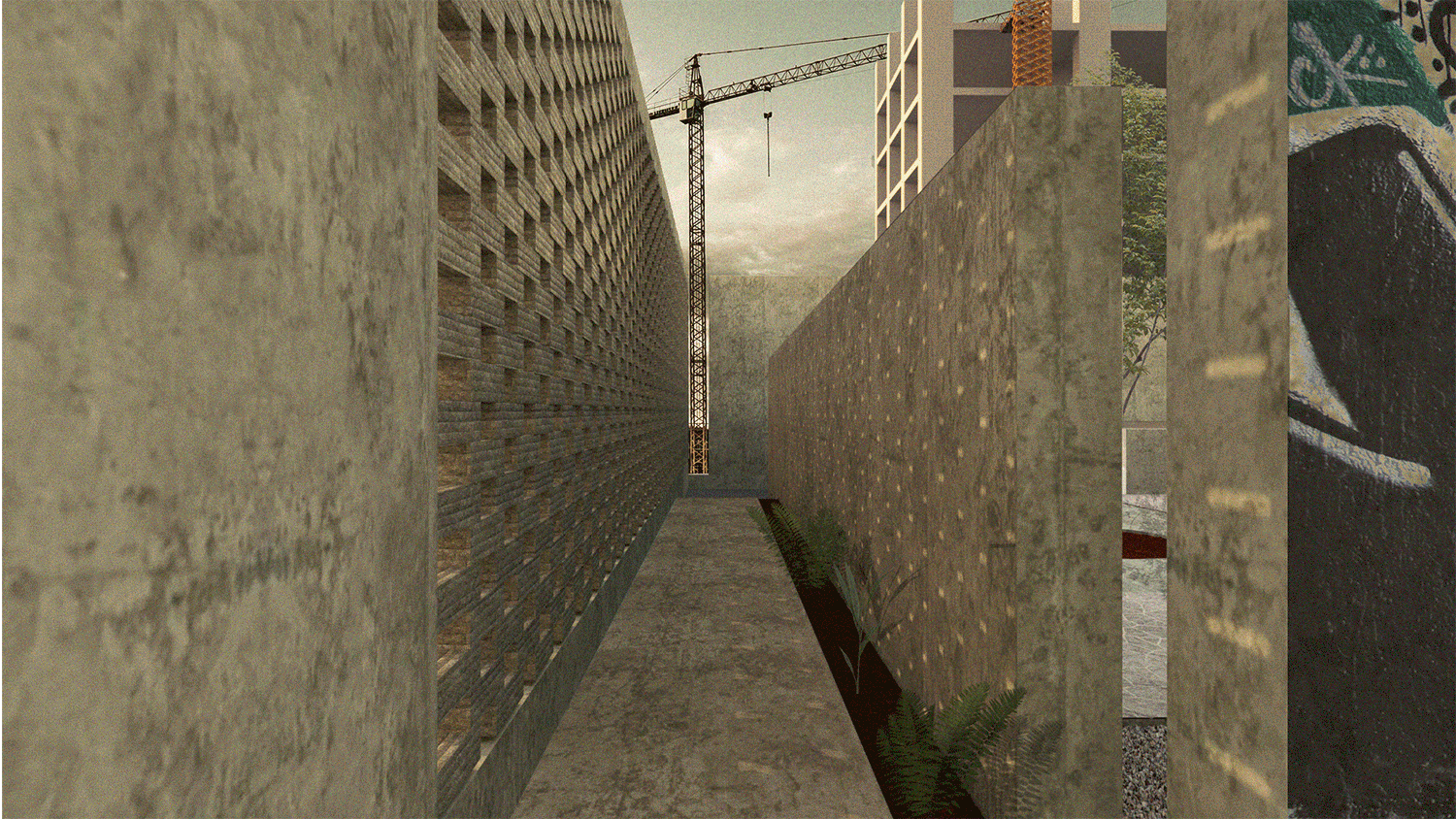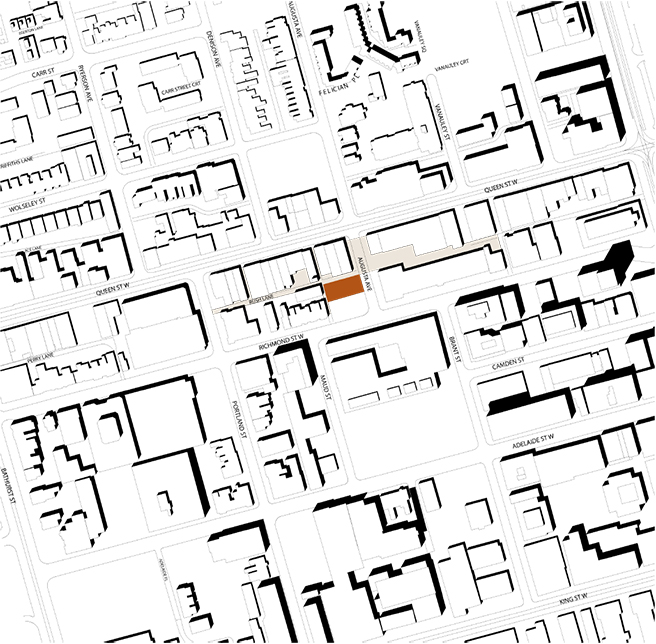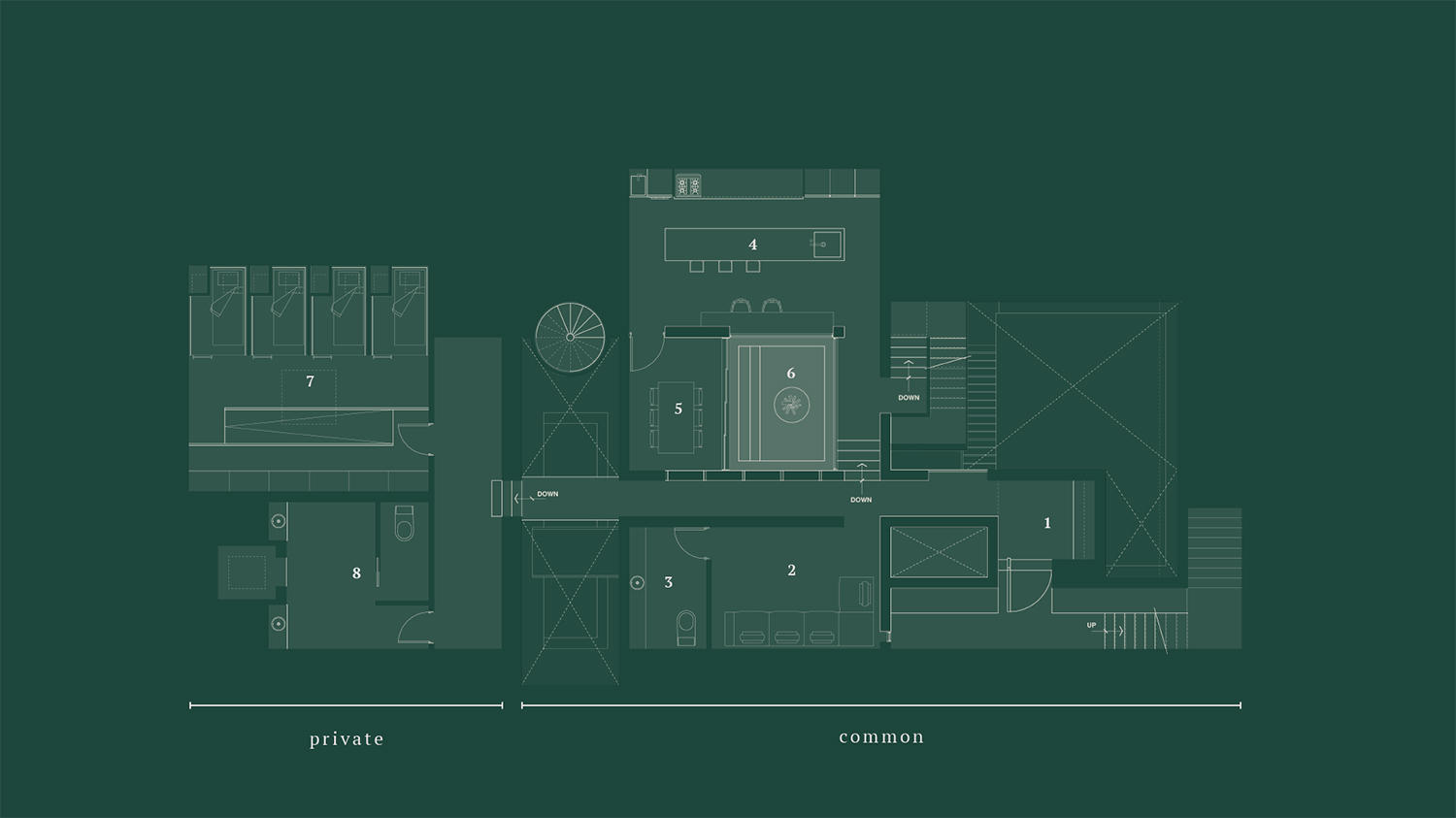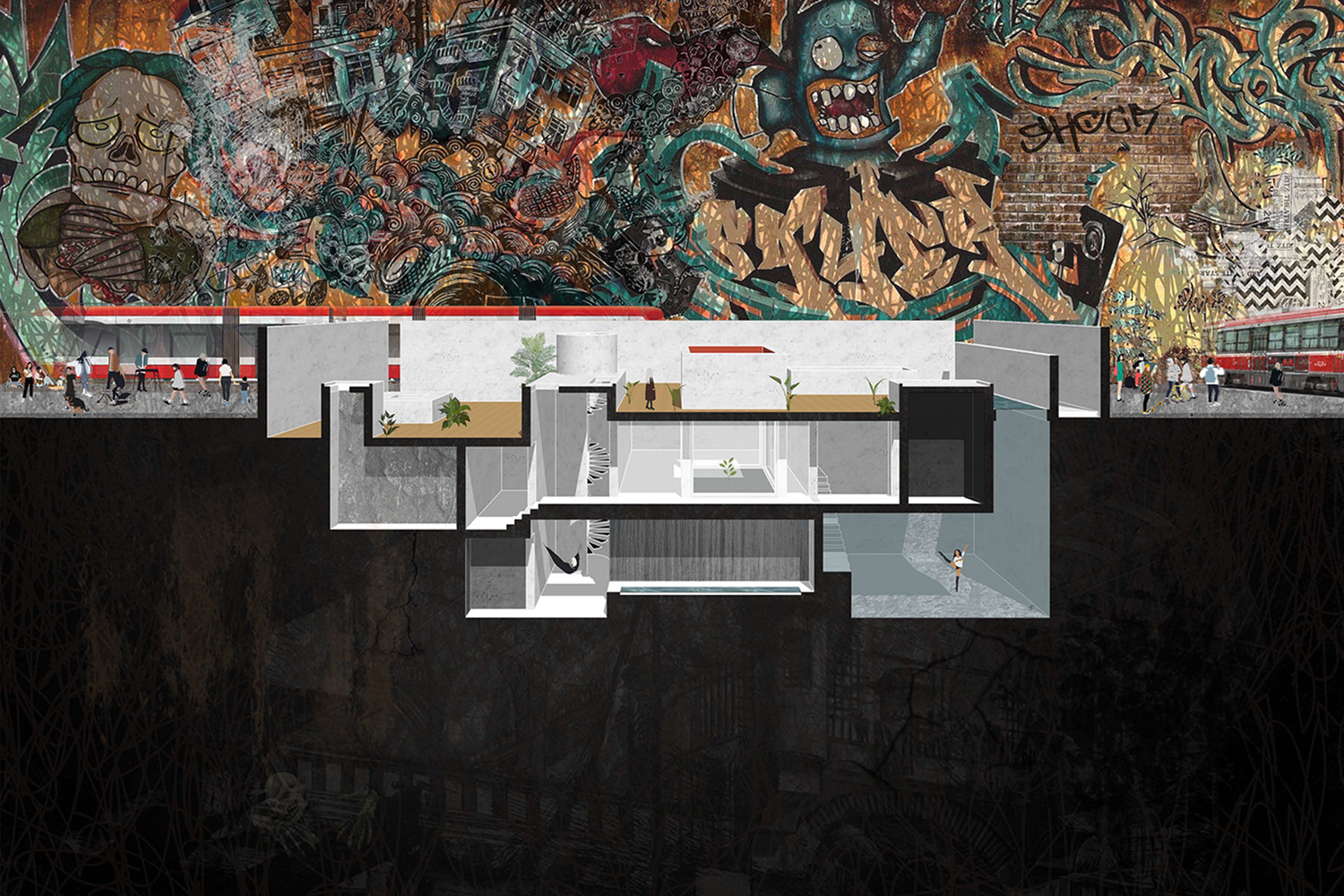CORALEE TREMBLAY
The Contrast House:
A Residence for Yoga Retreat
The Contrast House:
A Residence for Yoga Retreat

The chilly of the sweet morning mist, the aroma of the wood,
the warmth of the afternoon sunlight, the freshness of a steel railing, the
silence of the darkness, are moments where authentic architecture it’s all
about. Sensory spaces are defined by the quality of the space, by the atmosphere
they offer to different individual forging personal connection and memories
with the place. As Bachelard points out in the Poetics of Space, senses are
intensified in presence of their extreme opposite. In homogeneous spaces,
senses become meaningless. Stopping considering architecture as a whole and
dwelling on the essence of space, it’s to grant to senses a richness. Provide a
variety of spaces allow occupants to move into their preference of warm, light,
sound or quiet, it’s actually inhabited the space. Light seems more intense
when it follows by darkness as silence seems more precious when it come after a
loud outburst.
Warm seems more comfortable when it transits from the exterior
coldness as colors seems more powerful when the surroundings are homogeneous. A
sense of place emerges from the intricate interaction between the human body
and the place. Unfortunately, the contemporary architecture faces the lost of
senses and so the disappearance of the virtue of this sensibility and the
architectural sensuous experience. The architecture is biased by the eye. The
sense of vision is mainly the only that remains. The world becomes flat, losing
its echo and aspiring to an architecture on photographs. Let us dare return to
the senses and experimenting architecture from all its angles. Let’s talk about
architecture in terms of boundaries, transition, pathway, connections and
feelings instead of walls, opening, circulation and functions. Let’s create
containers for aesthetic emotions possessing the ability to capture people’s
sensuous conditions in specific situations.







